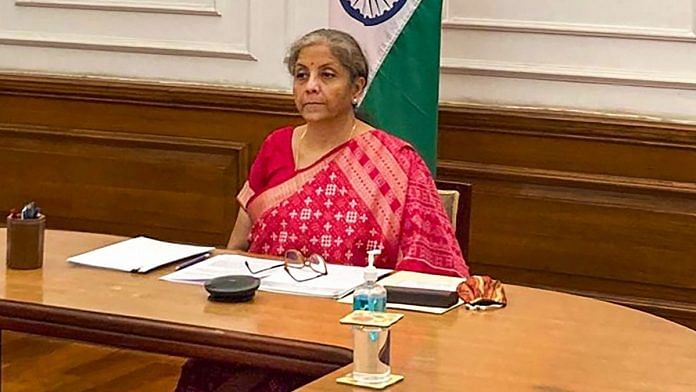New Delhi: India’s annual budget on Monday will be Prime Minister Narendra Modi’s chance to spur demand and investments in an economy cratered by the world’s second-biggest coronavirus outbreak.
His government’s growth-centric plans will be outlined by Finance Minister Nirmala Sitharaman when she delivers the budget speech starting at 11 a.m. in New Delhi. She’s expected to set aside more money for health care and infrastructure development and partly pay for them by raising record amounts by selling stakes in state-run companies.
While the success of the budget depends on how effectively India is able to contain rising infections through vaccine drives in the nation of more than 1.3 billion people, here are five key numbers to watch out for in the spending plan:
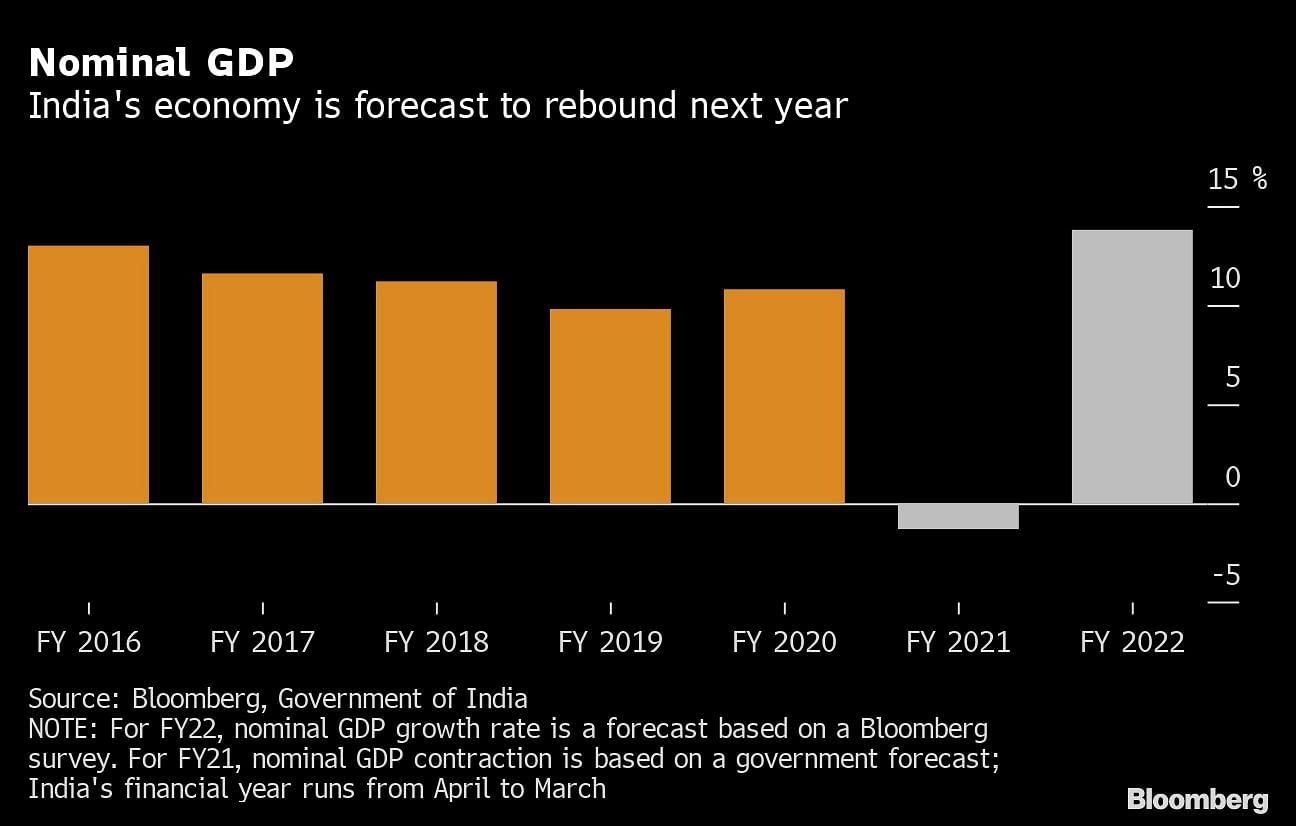
The IMF forecast India’s economy will expand 11.5% in the year starting April, which is a higher than the 9.2% estimated in a Bloomberg survey. Add inflation of around 4.5% to those projections and you get a nominal gross domestic product growth rate in the range of nearly 14%-16%. The number is key as budget assumptions for revenues and spending are based on this. Some economists, including Samiran Chakraborty of Citigroup Inc., expect nominal GDP to be pegged at 15% — the bullish end of the band.
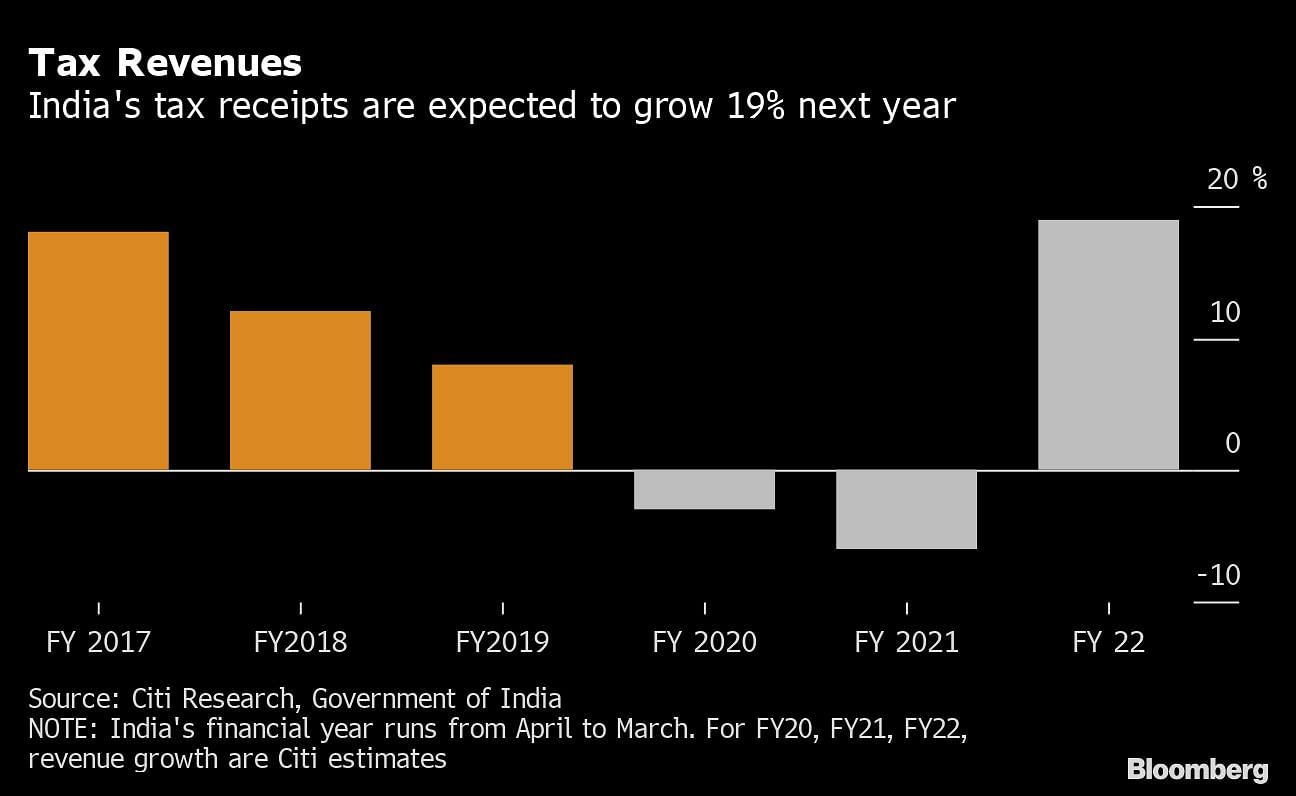
India’s tax collection has shown an uptick lately as momentum builds in the economy following the lifting of lockdowns to combat the coronavirus outbreak. That should give Sitharaman reason to peg overall tax revenue at a level greater than the 16.3 trillion rupees ($223 billion) budgeted for the current year.
Citigroup expects a 19% year-on-year growth in gross tax revenue next year, with healthier goods and services tax revenue helping boost overall collection. It expects GST to average 1.15 trillion rupees a month next fiscal — translating into nearly 14 trillion rupees in total for the year. Higher excise duty, especially from sale of petroleum goods, and robust corporate tax collection, thanks to a rebound in company earnings, will also help.
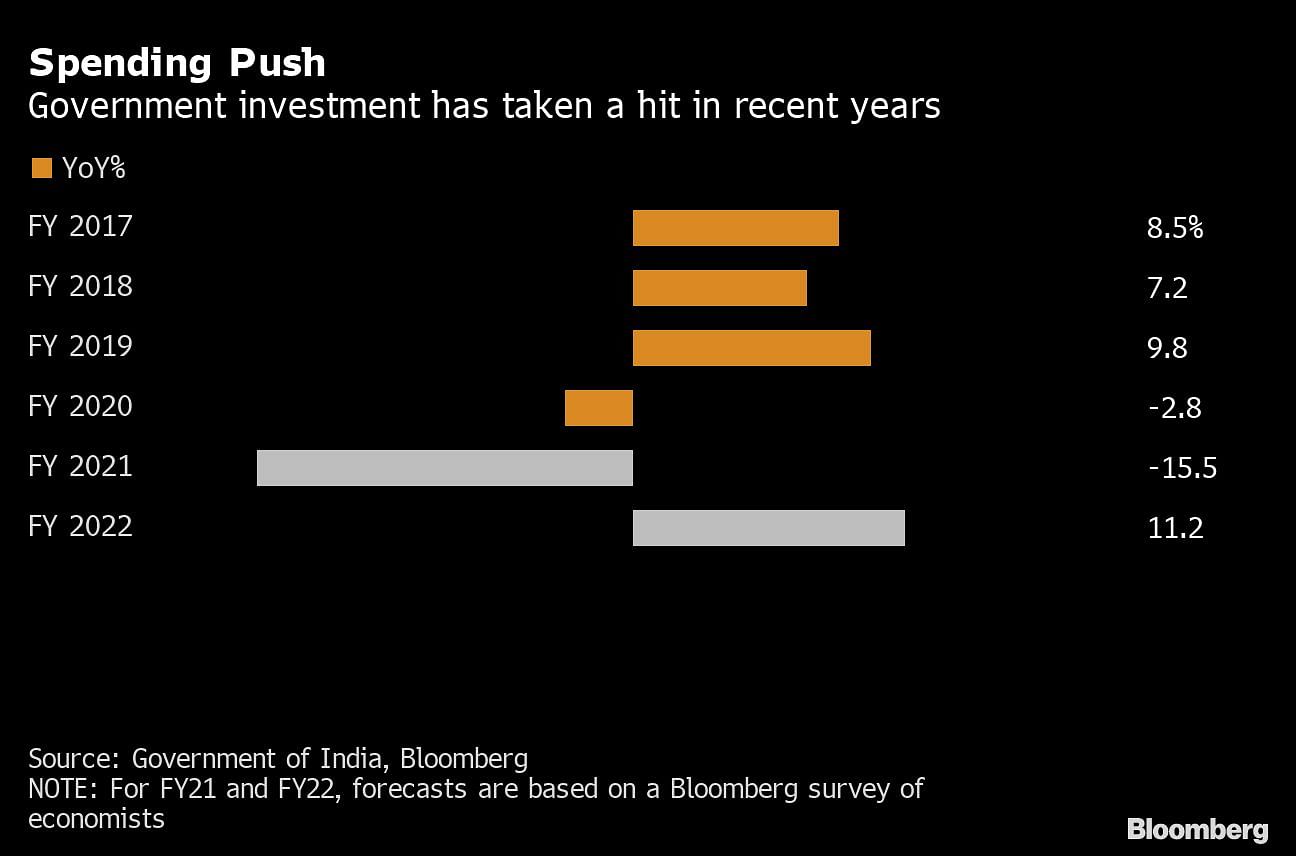
A labor market crippled by the impact of the pandemic and rising inequalities will exert pressure on Sitharaman to increase spending on everything from infrastructure projects to social sector and health care. While economists surveyed by Bloomberg see government investment, as reflected by gross fixed capital formation, rising 11.2% next fiscal year, analysts at Credit Suisse see the finance minister raising total expenditure by 20%-21% from 30.4 trillion rupees budgeted for the 12 months to March. That increase can help bolster growth.
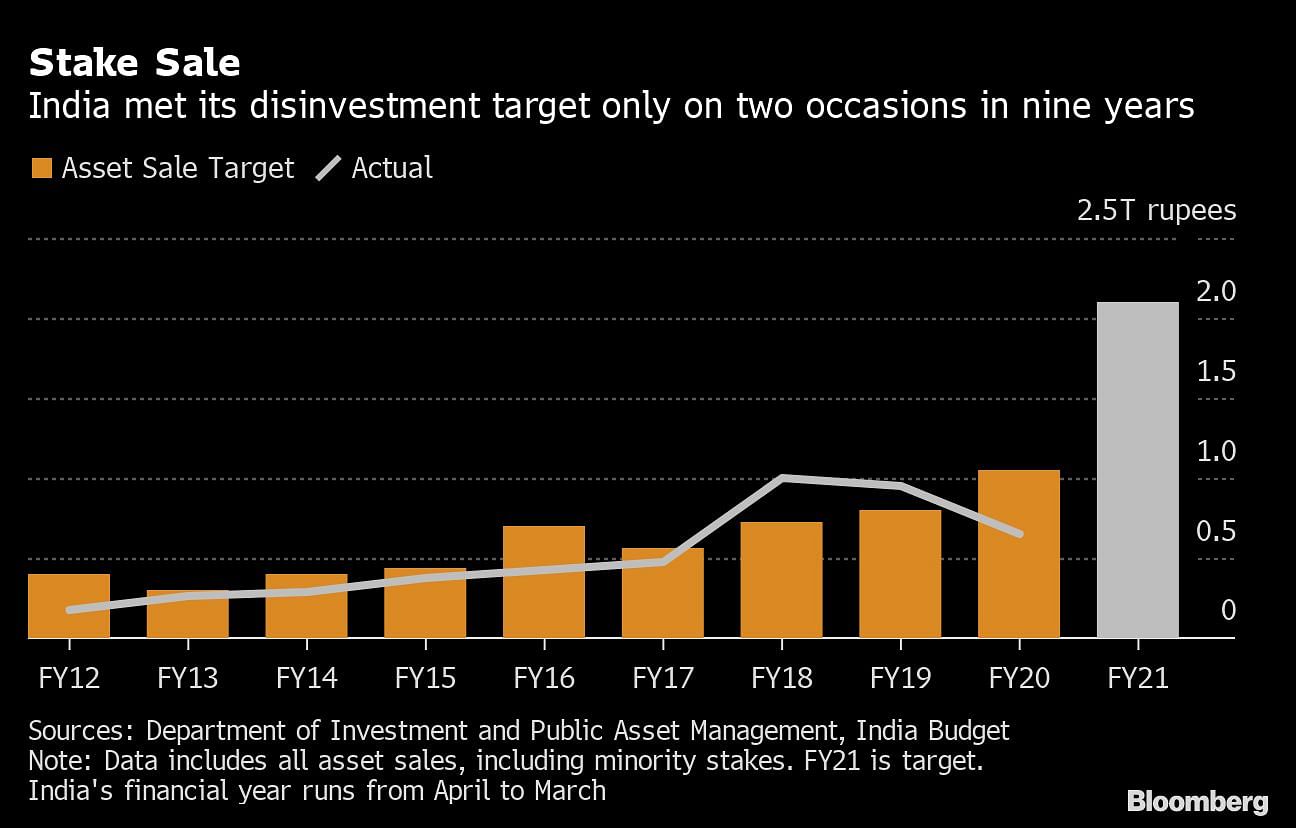
Selling stakes in state-run companies could be a sure way to raise money in the new year. After the pandemic ruined the government’s plan to raise 2.1 trillion rupees via divestment in the current fiscal, it may carry that goal forward and aim for record revenues from unloading shares in firms including Life Insurance Corp. of India.
Citigroup expects the Modi government to double non-tax sources of revenue from around 6 trillion rupees next year from around 3 trillion rupees penciled in for the current period. Another source of income will be from the auction of 5G airwaves besides an annual dividend — of around 800 billion rupees — from India’s central bank, Citigroup said.
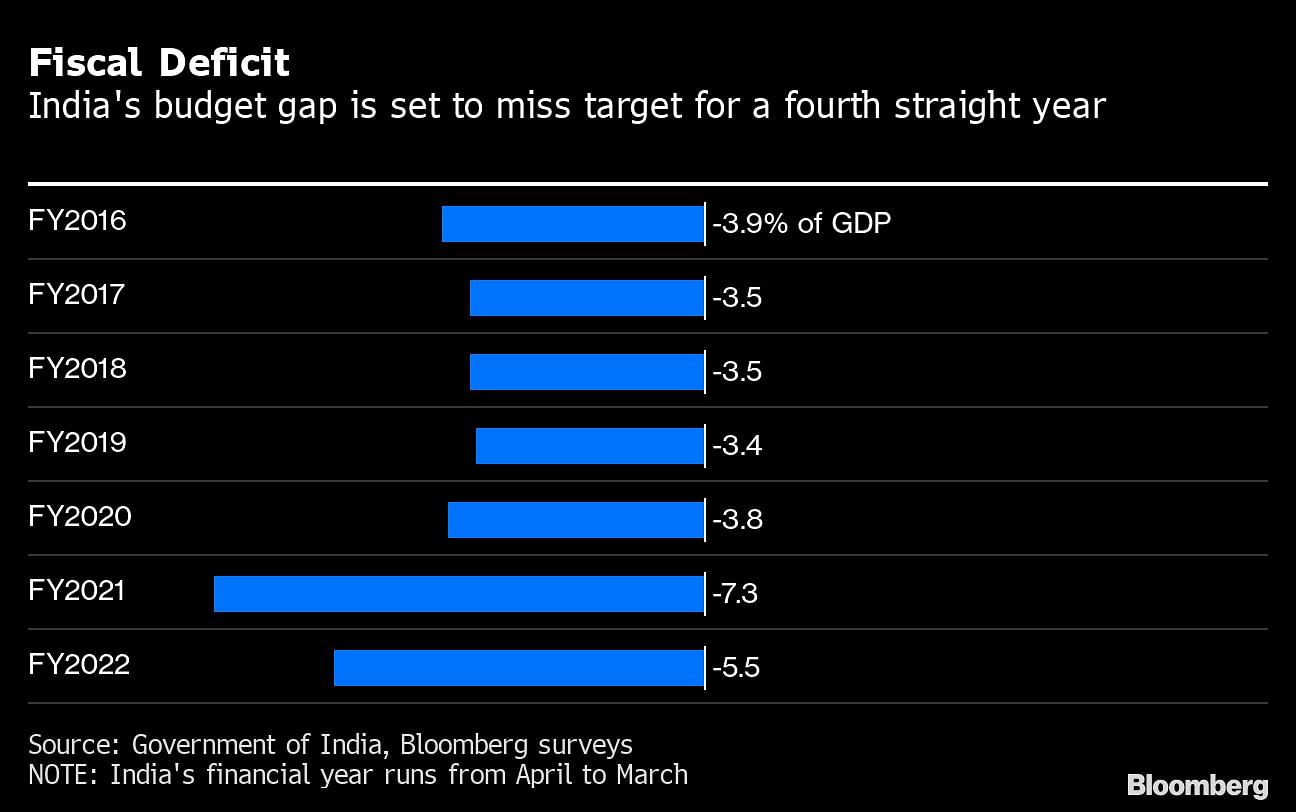
With the pandemic disrupting the government’s fiscal math, Sitharaman is nowhere closer to achieving the 3% budget gap mandated by law. Economists surveyed by Bloomberg predict she will target a deficit of 5.5% of GDP next year after it likely widened to 7.25% in the current year.
That, according to a Bloomberg survey, means New Delhi could announce a gross borrowing plan of 10.6 trillion rupees. While that will be lower than this year’s record 13.1 trillion rupees, the amount will be 75% above the previous five years’ average.-Bloomberg
Also read: GST revenue at all-time high of Rs 1.20 lakh crore in January 2021, says finance ministry


